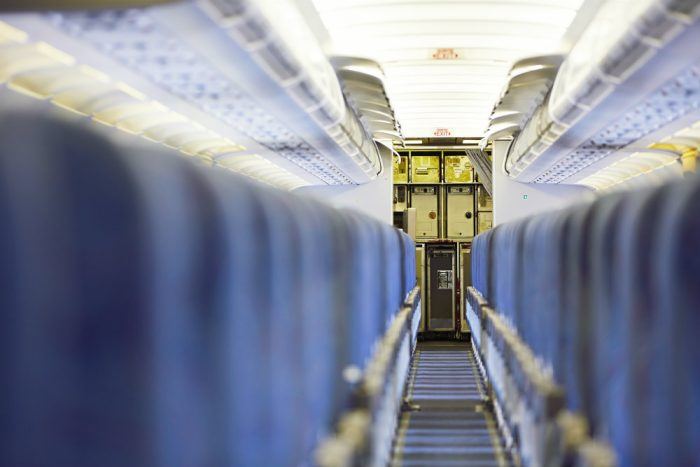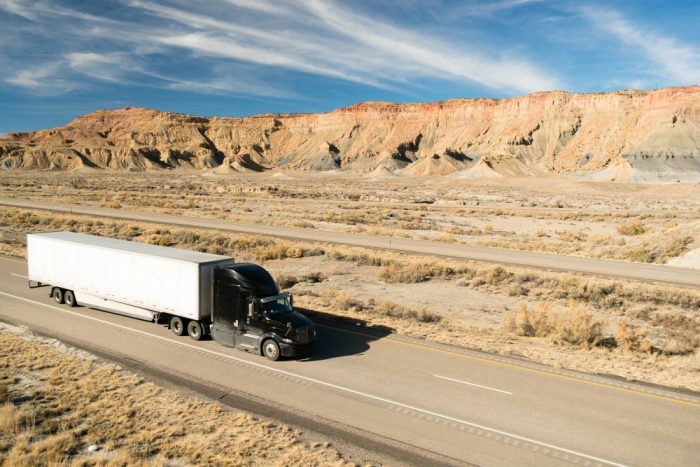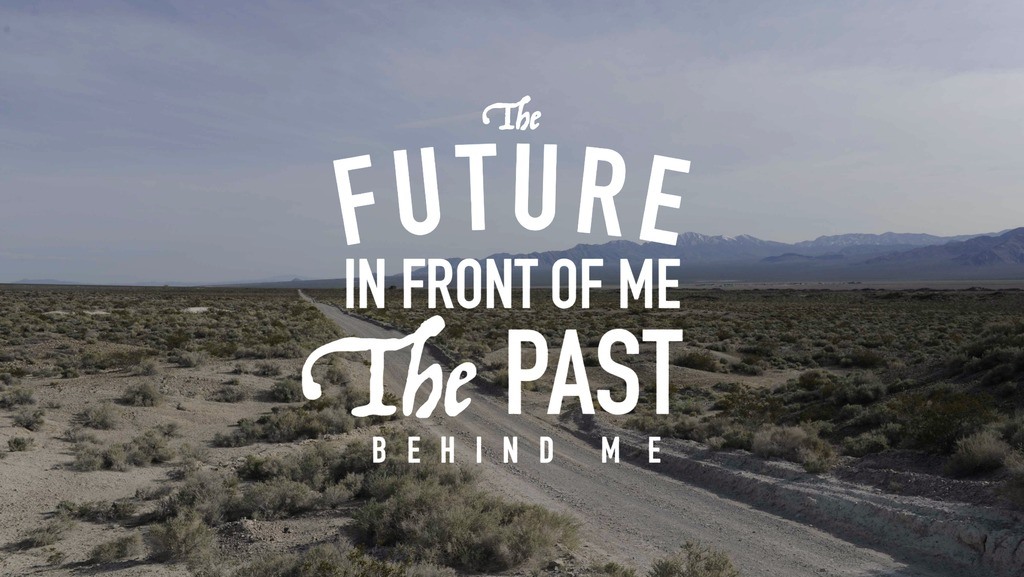The Future In Front of Me, The Past Behind Me is a gasoline-fueled narrative by automotive journalist Tony Borroz. It details the joys, thrills, and even the uncertainties of the car-obsessed lifestyle. In advance of the book’s release, we are previewing the first few chapters. Chapter one here.
I’m in downtown Palm Springs (at least I think it’s downtown, is there a downtown?) at a place called Lulu’s with my old friend Bob. Crossing that border, going either way, always seems to result in some shift of mood. Either crossing into Arizona on I-10 or into SoCal going the other way, things modulate. As I crossed over, other drivers seemed to both speed up and get less aggressive. It’s never out of your mind, when you’re in Arizona, that there are a lot of people wearing gun belts. People seem to have this affect of always being under threat, ready for anything.
“Don’t cross me” seems to be the attitude, body language, and implication, if not outright stated. I once had a guy reach for his gun on me when I moved his shopping cart out of the way at the Fry’s Grocery.
But this does not seem like a very strong possibility here in Palm Springs. Palm Springs is simultaneously an odd and an alluring place. It’s about as Southern California as you can get without a beach. Everyone seems polished, for a start. Everyone, or nearly everyone, boarders on Hollywood-good-looking. Which is not that surprising, since Palm Springs was started, or at least put on the map, as a Hollywood Colony, a nice getaway spot for the weekend, before The War. It has that sense that everyone you see, at least everyone who is white or acceptably ethnic, is somehow Connected.

Setting The Scene
It’s a nice balmy desert evening in January by the time Bob and I are making our way through the semi-cavernous interior of Lulu’s. Lulu’s is like an architectural representation of Palm Springs itself. Who knows what it was when it was first built, because by now sweetie, this place has had more work done than Joan Rivers. On top of that, it’s polished, lit just so with very expensive looking lights, slathered with “art” of a nondescript modernist bent, decorated in colors a toddler would love, and menu’d with fare that is 50 percent weird stuff (calamari croquembouche with a fennel semi-demi-glaze drizzled in raw balsamic goat sweat) and 50 percent normal diner food (burgers, fries).
And, since this is Palm Springs, about a third of the people you see are gay. The other thirds are Hollywood types, usually an older rich guy with his bit of fluff for the night, and then even older Hollywood types. Palm Springs is where a lot of gay people go both from SoCal and from up in the Bay Area. Supposedly the place gets really full around holidays, Christmas and Thanksgiving and such. It makes sense. Who wants to spend time with a family that, up until recently, was pretty damn likely to disown you.
Rocket Man
Bob is gay. He’s an older, refined sort of fellow that I worked with for a number of years at Boeing. He has a clipped and direct way of speaking; looking squarely at you, always clearing his throat to speak, precise in his diction and word choice. You could think that’s because he used to be a writer (at least that’s what he was when I met him at Boeing) but it’s actually his mom raising him to be a gentleman at all times. He’s that kind of Old School Guy.
He understands what is expected. He knows what one does not say at a time like this. He can also turn that off in an instant to make stunningly adult jokes that leave everyone in convulsions. Bob is good company and it always turns out to be a good conversation. In addition to being a plane guy (you had to be, working in the aerospace industry) Bob is very, very much a car guy. It used to be Porsche 911s (he owned a string of them) that he was constantly working on and modifying, but recently he got a first-gen Mercedes SLK. “I’m older now,” he said by way of explanation.

Grand Visions
Tonight’s first topic of conversation: the modern aircraft industry, natch. Bob, being an older chap, is starting to show some weariness concerning things that fly. He had been around the industry long enough to have seen, if not been part of, a lot of outright failures. If things turned out the way the aircraft industry said it would, by now, there would be super-sonic transports zipping all over the place and landing at airport transportation hubs built on top of skyscrapers in downtown Chicago. But, they didn’t, so here sit Bob and I talking about current failures.
“Well Airbus sure screwed it up with the A380,” he says with a wry chuckle.
The A380 is that huge double-decker plane that, if you listened to the Airbus marketing guys, was going to dominate all overseas routes and literally be the only way to fly if you were on a long haul hop from Australia to Dubai. Bob was, of course, referencing the recent news that Airbus was on the verge of canceling any further production of the A380 because no one was buying them. Then Air Emirates handed them a lifeline and put in an order.
“Seriously, they thought that would work,” scoffed Bob. “They take forever to get people on and off of. They require larger gates. [That’s a huge deal.] And the fuel costs are outrageously high. But there’s Boeing, plugging along with making dual-engined wide-bodies that can fly from Hartsfield-Jackson to Gatwick in a single hop on 30 percent less fuel. Who the hell does Airbus think they’re fooling? What, airlines want to spend more money? Never in my life, I can tell you that!”
Bob’s right. There are many, many things I learned working in aerospace. I picked up stuff on composites and the logistics of bombing the living crap out of a city and why you design planes to have the engines literally drop off in some situations. I also learned a lot about why people buy airplanes. Why do rich people buy airplanes? Convenience. The same reason we own cars: because taking the bus or getting a cab is pretty inconvenient in most cases.

Jumbo Jets & Big Rigs
Why do airlines exist? To make money. Period. Remember all that mid-century stuff about how airliners of the future would be like flying bar-lounges where the Roger Sterlings of the 21st Century would hang out, make the big deals, and get drunk as skunks? Yeah, that didn’t happen, did it? Airlines are not in the travel business. They are not in the business of making your flying experience one of luxury and being pampered by a miniskirted sky-trollop. No. Airlines are in the people moving business. And, like any other business, they are there to make money. First and last and always. So goodbye Sky Lounge and hello to cramming as many people as you can fit into a tube without them going totally Malthusian on the flight crew.
Bob recently got to fly first class, and he noticed, as I had noticed in the recent past, that flying first class today is what flying, period, was like years ago. To be treated with dignity and respect and like a living, breathing human being; you’ve got to pay for it now. Nearly triple, actually. The sad trajectory here is that airlines will keep squeezing us, literally, as much as they can until there is such a passenger revolt, or the FAA forces them through regulation to stop treating us like pigs in a semi trailer bound for a rendering plant.
Of course, talking about planes quickly led us to talking about cars. Specifically, Bob and I were both fascinated by the impending arrival of self-driving cars. Of course we both look at the entire concept with dread and repugnance, but auto firms seem to want to make it happen, and a certain portion of the populace think it’s a good idea.
“But you know,” Bob said, “that’s not where they’re going to really work.”
“How do you mean?”
“Look, the most logical place to get all this self-driving car tech figured out and first implemented is with self-driving semis,” he grinned.
It suddenly made perfect sense, like someone telling you “turn it to the left to get the screw off.”
“Yeah, that would work. It’s using an industrial setting as a technical proving ground,” I agreed.
“And, most semi truck driving is on long, more or less straight stretches of freeway. There’s little variation in routes. And getting stuff from A to B is easier than people who change their minds, want to stop for lunch and all that stuff,” he pointed out.
“The only problem is going to be . . . ”
“Teamsters,” we both said in unison.
“Jeez, can you imagine their response when Elon Musk tries to tell them their jobs are going to be obsolete,” I asked, shaking my head.
“Oh. They’ll weld him into an oil drum and dump him into Monterey Bay before dinner,” Bob smiled. “This is the problem with tech guys. Half of the time they answer questions nobody really asked, and the other half of the time, they don’t fully grasp who they are going to seriously piss off with their bright ideas.”

What Women Want?
I told Bob about when I was working at Microsoft, and this guy was putting together a presentation for digital currency and how it can be used and all that stuff. At one point, his presentation said something about “we will soon have a completely cashless society” and I half-stifled a laugh. He looked at me incredulously. “What? You don’t think we can do it?” Oh, I know you can do it. It’s just if you think there’s going to be a “cashless society” I know of some thoroughly legitimate businessmen in the waste disposal industry in northern New Jersey you should talk to.
It was like a light bulb went off over his head, I told Bob. He had literally never thought about the possibility that some people actually like to deal in cash. And there’s a whole portion of society that needs to have things be on a cash-only basis. I think I kind of ruined the poor guy’s presentation for him.
Naturally, talk of self-driving-anything lead to Bob’s next thesis for the night: women want appliance cars.
Now, at this point, it’s worth mentioning that Bob is, in a lot of ways, an old school kind of guy. And on top of that, he’s an old school gay guy. Not that he’s misogynistic, just like a lot of post-war gay guys, he never seemed to be interested in women as people. Call it a low grade, but not negatively realized prejudice.
I don’t agree with Bob on this, or idea that “women want appliance cars” but I can see where he’s going. It dovetails with the self-driving car thing. I don’t think that women want appliance cars – I think a certain portion of the population, male or female, want cars that function as nothing more than appliances.

Necessity Versus Passion
The thesis, in more egalitarian terms, works like this: An even larger portion of the public either have no need for cars, or, if they do, see them as little more than the machine you use to get from here to there. This is the machine that makes my toast, this is the machine that heats my food, this is the machine that gets me to my job, then to the club after work.
For people that think like this, and Bob and I both feel there is a growing number of them, a self-driving car seems ideal. These are, we both postulated, 90 percent of the people who buy Kias and Hyundais and other near-entry level “fashion” cars. Cars that look of the moment, styling-wise, that have a lot of cool features you expect in a new car, but will also be a device that, when the time comes to ditch it, you will do so with about as much thought as junking an old microwave.
This is the future demographic for self-driving cars. Neither Bob nor I am outright opposed to this future, but we also agreed that just as long as they stay the hell out of our way when we’re out for a Sunday morning drive, it will be a good thing for us gearheads.
Tony Borroz has spent his entire life racing antique and sports cars. He is the author of Bricks & Bones: The Endearing Legacy and Nitty-Gritty Phenomenon of The Indy 500, available in paperback or Kindle format. His forthcoming new book The Future In Front of Me, The Past Behind Me will be available soon. Follow his work on Twitter: @TonyBorroz.


